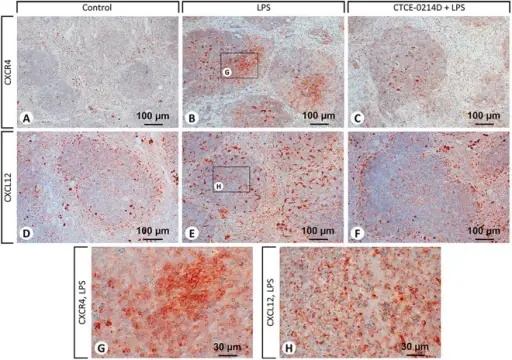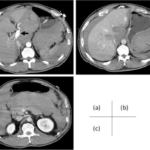The systemic effects of inflammation include shock, and sepsis.
What are the Systemic Effects of Inflammation?

(A), CXCR4 appeared on macrophages and lymphocytes in the red and the white pulp, wherein in lymphoid follicles its presence was predominantly limited to lymphocytes in the marginal zone. Several cells in the red pulp are stained non-specifically (clearly distinguishable from the specific staining because of a granular appearance of the staining). LPS challenge (B) caused various CXCR4 positive cells to appear in the white pulp. The additional administration of CTCE-0214D diminished the amount of CXCR4 positive cells in the tissue to a minimum (C). CXCL12 staining in the spleen of saline-treated animals (D) revealed that particularly splenocytes in the white and the red pulp as well as plasma cells in the red pulp produced CXCL12. LPS treatment caused an increased CXCL12 expression in plasma cells, splenocytes, and endothelial vascular cells in the red pulp, whereas in the white pulp predominantly splenocytes and tingible body macrophages became positive. Co-administration of CTCE-0214D to the endotoxin (F) reduced the appearance of CXCL12. In the photomicrographs of (G) and (H) the tingible body macrophages (CXCL12 positive) and the engulfed lymphocytes in their cell bodies (CXCR4 positive) are depicted at higher magnification (630x). Administration of a CXCL12 Analog in Endotoxemia Is Associated with Anti-Inflammatory, Anti-Oxidative and Cytoprotective Effects In Vivo: Seemann S, Lupp A - PloS one (2015). Not altered. CC.


